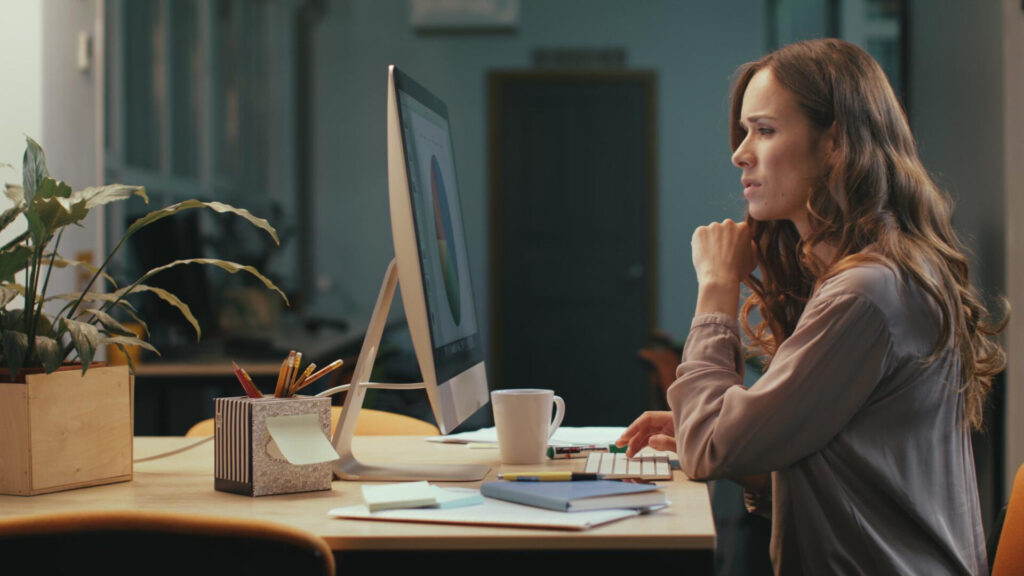Why Afternoons Are the Most Wasted Hours of Your Day
You Start Strong—Then Everything Slows Down
You hit the ground running in the morning. Your mind is sharp, your priorities are clear, and the to-do list starts shrinking. But then—like clockwork—everything begins to blur around mid-afternoon. Tasks take longer, distractions multiply, and your motivation dips.
This daily phenomenon isn’t just frustrating—it’s draining your overall productivity. In fact, the hours between 1 PM and 4 PM are often the least effective of the entire workday. Not because you’re doing less—but because you’re being pulled in too many directions at the exact moment your energy starts to fade.
The Hidden Cost of Afternoon Distractions
The real problem isn’t just about feeling tired. It’s what happens when mental fatigue meets constant interruption:
✔️ You begin to procrastinate on meaningful work
✔️ You fill time with low-value tasks that feel productive but aren’t
✔️ You chase a boost through caffeine or screen time, only to feel worse later
And while it may feel like you’re still “busy,” you’re not truly moving forward. Afternoon hours often become a blur of reaction, not action—and over time, that adds up to missed goals, unfinished projects, and burnout.
Why “Reclaiming Your Afternoon” Is a Game-Changer
Most time management advice focuses on your morning routine. But learning how to reclaim your afternoon from distractions gives you an edge where most people struggle.
This article isn’t about hustling harder. It’s about learning how to:
✔️ Stay productive after lunch without relying on willpower
✔️ Beat the afternoon slump by aligning your tasks with your energy
✔️ Increase focus in the afternoon through simple, science-backed strategies
By the end, you’ll know how to take back control of your afternoons—and turn them into your most powerful hours of the day.
Understanding Your Afternoon Energy Cycles
The Science of Circadian Rhythms and Energy Dips
Your body operates on a biological clock called the circadian rhythm, which influences alertness, mood, and cognitive performance throughout the day. While most people experience a peak in focus during the morning, the afternoon dip is a natural decline in energy, not a sign of laziness.
Scientific research suggests that:
✔️ Cognitive performance typically peaks around 10 AM – 12 PM
✔️ A natural energy dip follows between 1:30 PM – 3:30 PM
✔️ A secondary energy boost can occur in the early evening (4:30 PM – 6:30 PM)
During the afternoon, body temperature slightly drops, triggering a mild sleep response similar to what happens before bedtime. This is why mental sharpness, problem-solving abilities, and reaction times decrease temporarily.
Understanding this rhythm helps you optimize work schedules instead of fighting against natural energy fluctuations.
How Food, Sleep, and Stress Affect Afternoon Focus
Three primary factors amplify the afternoon slump:
1. Food Choices
Your lunch directly impacts afternoon energy levels. Heavy meals (high in processed carbs and fats) lead to post-meal drowsiness, while balanced meals sustain productivity.
Best Foods for Afternoon Focus:
✔️ Lean protein (chicken, fish, tofu) for steady energy
✔️ Healthy fats (avocado, nuts) to prevent energy crashes
✔️ Complex carbs (quinoa, brown rice) for slow glucose release
Foods to Avoid:
❌ Sugary snacks (cause crashes within an hour)
❌ Fast food (high in unhealthy fats, leading to sluggishness)
❌ Large portions (diverts blood flow to digestion instead of the brain)
2. Sleep Quality
If you didn’t get 7–9 hours of sleep the previous night, the afternoon dip will be more intense. Poor sleep weakens concentration, increases fatigue, and makes distractions harder to resist.
Signs of sleep deprivation affecting productivity:
✔️ Strong urge for caffeine or sugar
✔️ Decreased motivation to complete tasks
✔️ Frequent mind-wandering or forgetfulness
Fix: Prioritize consistent sleep schedules and limit blue light exposure before bedtime to improve next-day focus.
3. Stress Levels
High stress drains cognitive resources. If you enter the afternoon already mentally exhausted from decision fatigue, multitasking, or workplace pressures, the slump will hit harder.
Stress-reduction techniques for sharper afternoons:
✔️ Mindful breathing (2-minute reset before deep work)
✔️ Short walks (lowers cortisol levels)
✔️ Clear task prioritization (avoids overwhelm)
Identifying Your Personal Productivity Peaks and Lows
Not everyone experiences energy dips at the same time. The key is to track your own patterns to adjust your workflow.
Try this simple method:
- For one week, log your energy levels every 2 hours (scale of 1-10).
- Note when you feel most alert and when focus drops.
- Align deep work with high-energy periods and save light tasks for dips.
Example of an optimized schedule based on energy tracking:
| Time | Task Type |
|---|---|
| 8 AM – 12 PM | Deep work (complex problem-solving, writing, coding) |
| 12 PM – 1 PM | Lunch + light movement |
| 1:30 PM – 3:30 PM | Admin work, meetings, creative brainstorming |
| 3:30 PM – 4:00 PM | Break (walk, meditation) |
| 4:00 PM – 6:00 PM | Second deep work session (if needed) |
Key takeaway: Instead of fighting against afternoon fatigue, structure your schedule around it. In the next section, we’ll explore how to eliminate common distractions that steal productivity during this critical time.

Eliminating Common Afternoon Distractions
Digital Disruptions: How Notifications Drain Your Focus
One of the biggest threats to afternoon productivity is digital distractions. Emails, messages, and social media notifications constantly pull attention away from deep work, making it harder to regain focus.
📌 Fact: Studies show that it takes an average of 23 minutes and 15 seconds to fully refocus after an interruption. If you check your phone even once every 20 minutes, you might never reach full concentration.
How to Reduce Digital Disruptions:
✔️ Turn off non-essential notifications on your phone and computer
✔️ Use “Do Not Disturb” mode during deep work sessions
✔️ Batch email and message checking (e.g., 2-3 specific times per day)
✔️ Use website blockers (e.g., Freedom, Cold Turkey, or RescueTime)
Pro Tip: If you struggle with social media temptation, move apps to the last screen on your phone or log out after each session to increase friction before use.
Social Interruptions: Setting Boundaries with Colleagues and Family
Unplanned conversations and interruptions from colleagues, family members, or roommates can derail entire work sessions.
Common Workplace Disruptions:
❌ Unscheduled meetings or calls
❌ Frequent “Got a minute?” requests
❌ Background chatter or office noise
How to Reduce Social Interruptions:
✔️ Use a visible “focus signal” (e.g., wearing headphones, a desk sign)
✔️ Set “office hours” for availability (even at home)
✔️ Communicate boundaries clearly (politely say, “I’ll be available at 4 PM”)
✔️ Use a dedicated workspace (if working remotely, avoid high-traffic areas)
Pro Tip: If you work in an open office, try white noise apps or noise-canceling headphones to minimize background distractions.
The Trap of “Quick Breaks” That Steal Hours
Taking breaks is essential, but unstructured breaks often lead to unintentional time sinks. A 5-minute social media scroll can turn into 30 minutes, and a quick chat can stretch into a long discussion.
Common “Quick Break” Time Traps:
📱 Checking social media → 30+ minutes lost
🖥️ Watching “just one” video → Multiple videos autoplay
☕ Going for coffee → Socializing turns into a break extension
How to Avoid Time-Sink Breaks:
✔️ Use a timer (e.g., 5-minute countdown for breaks)
✔️ Take “active breaks” (walk, stretch, drink water) instead of scrolling
✔️ Set clear end times (e.g., “I’ll resume work at 2:30 PM”)
Pro Tip: If you struggle with excessive break times, try the Pomodoro Technique—work for 25-45 minutes, then take a 5-10 minute break.
Key Takeaway:
Distractions don’t just waste time—they fragment focus and make productivity harder. By proactively reducing digital interruptions, setting boundaries, and structuring breaks, you reclaim control over your afternoons.

Structuring Your Afternoon for Maximum Productivity
The Power of Time Blocking: Allocating Tasks to Energy Levels
Time blocking is a proven technique that helps prevent procrastination and ensures you stay focused by assigning specific time slots for different tasks. Instead of passively reacting to tasks as they arise, you take control of your schedule.
📌 Fact: Studies show that people who time-block their day are 47% more productive compared to those who work reactively.
How to Use Time Blocking for Afternoon Focus:
- Segment your afternoon into focus periods (e.g., 60-90 minute blocks).
- Match tasks to energy levels (e.g., deep work when most alert, admin work when energy dips).
- Set a clear start and end time for each block to prevent overworking.
- Use buffer periods (5-10 minutes between tasks) to reset and refocus.
Example Afternoon Time Block Schedule:
Time | Activity |
|---|---|
1:00 – 1:30 PM | Email check & light admin work |
1:30 – 3:00 PM | Deep work session (complex problem-solving, writing, coding) |
3:00 – 3:15 PM | Short break (walk/stretch) |
3:15 – 4:30 PM | Meetings, brainstorming, or creative work |
4:30 – 5:00 PM | Closing tasks, review, and planning for tomorrow |
The 90-Minute Rule: Working with Your Attention Span
Research in cognitive science suggests that the human brain works best in 90-minute cycles, known as ultradian rhythms. After this period, focus starts to decline, making breaks essential.
✔️ Work in 90-minute deep focus sessions
✔️ Take a 10-15 minute break to recharge
✔️ Avoid back-to-back meetings without recovery time
⏳ Pro Tip: If 90 minutes feels too long, start with 50-minute focus periods followed by 10-minute breaks, then gradually increase.
Choosing the Right Afternoon Workload: Deep vs. Shallow Tasks
Not all tasks require the same mental effort. Deep work involves complex, focused thinking, while shallow work consists of routine, low-effort tasks.
Task Type | Best Time to Do It |
|---|---|
Deep work (writing, coding, problem-solving) | Early afternoon (1:30 – 3:00 PM) |
Light tasks (emails, admin work, calls) | Post-slump period (3:30 – 5:00 PM) |
How to Balance Workload Efficiently:
✔️ Prioritize deep work when your focus is strongest
✔️ Batch similar shallow tasks together to avoid frequent context-switching
✔️ End your day with a review/planning session to reduce next-day stress
Key Takeaway: Instead of fighting against natural afternoon fatigue, structure your work to align with your energy levels.
References and Inspirational Resources
- When: The Scientific Secrets of Perfect Timing by Daniel H. Pink. Riverhead Books.
- Why We Sleep: Unlocking the Power of Sleep and Dreams by Matthew Walker. Scribner.
- American Psychological Association – Articles on focus, attention, and circadian rhythms.
- Harvard Business Review – Features on time management and energy optimization.
- Journal of Occupational and Environmental Medicine – Research on workplace productivity cycles.
- NASA Technical Memorandum – Research on the effects of napping on alertness and performance.
- RescueTime Blog – Data-driven insights into digital distraction and productivity.















